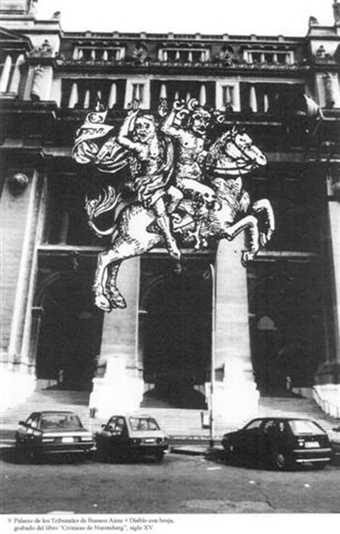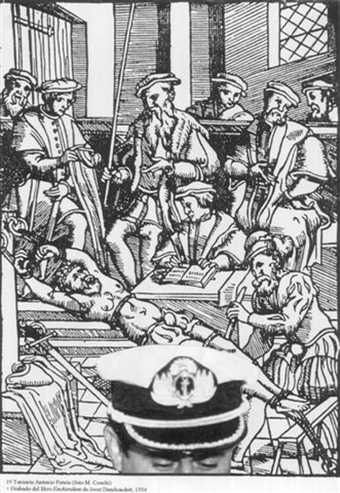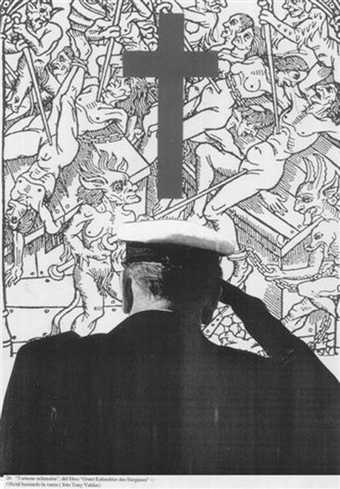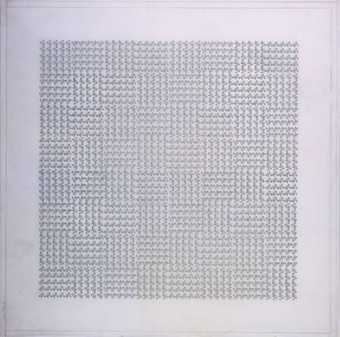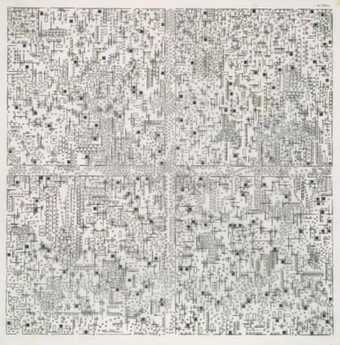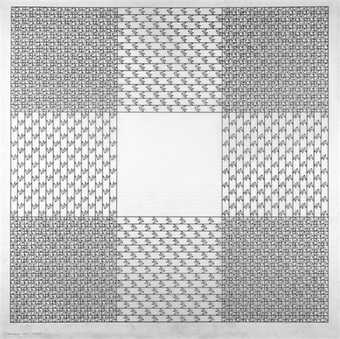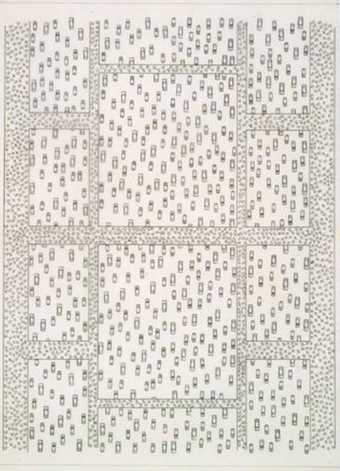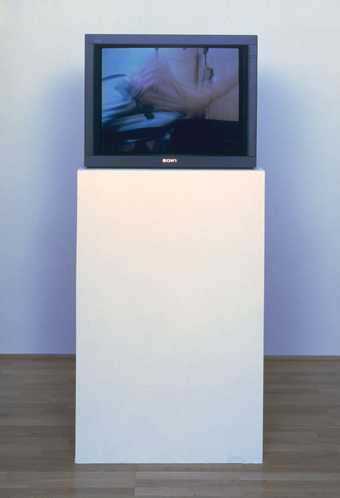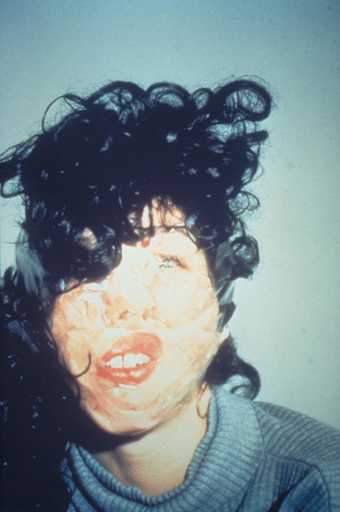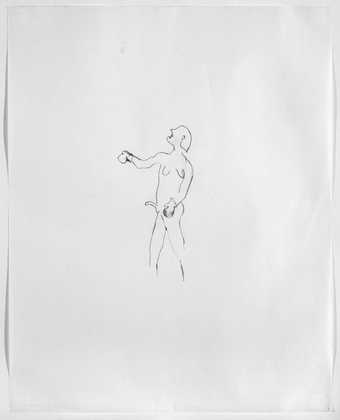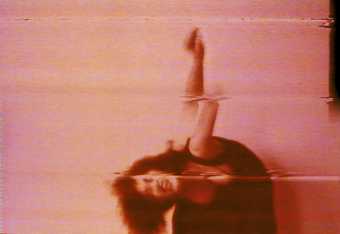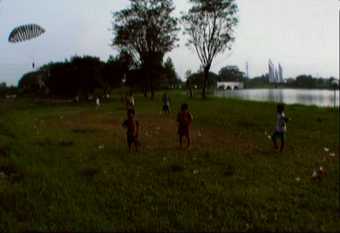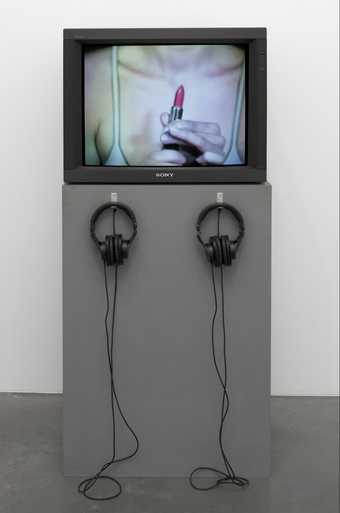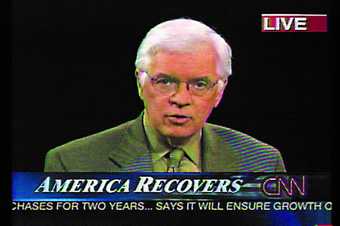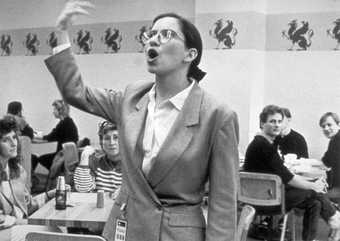In Tate Liverpool
Democracies
Free- Artist
- Marta Minujín born 1943
- Original title
- El Partenón de libros
- Medium
- 5 photographs, print on paper, mounted on board, and video, monitor, colour and sound
- Dimensions
- Duration: 14min, 59sec
unconfirmed, each: 593 × 597 mm - Collection
- Tate
- Acquisition
- Presented by ArteBA 2014
- Reference
- T14343
Summary
The Parthenon of Books 1983 is the documentary record of a project by Marta Minujín in which she reconstructed the classical Greek temple of the Parthenon from the Acropolis in Athens out of books. In its current form the work consists of five black and white photographs showing various stages of the construction of the temple and a video recording the event and public reaction to it. The photographs are unique prints.
Realised in the busy Avenue 9th of July in Minujín’s native Buenos Aires, the central artery of the city, The Parthenon of Books was built using a tubular structure measuring fifteen metres across, thirty metres long and twelve metres high. To this structure were attached more than 20,000 books, fully covering the columns, frieze and pediments of the temple. Minujín chose books which had been banned during the Argentinian military dictatorship (1976–83), including works by Sigmund Freud, Karl Marx, Jean-Paul Sartre, Adam Smith, Ernesto Sábato, Antonio Gramsci, G.W.F. Hegel, Ernest Hemingway, Jorge Luis Borges, Marguerite Yourcenar and Michel Foucault, as well as reference volumes such as the Salvat Encyclopedia and children’s stories including The Little Prince by Antoine de Saint-Exupéry. The books were donated by more than thirty-five publishing houses, which had been keeping many of them in storage thanks to the coordination of the Argentine Book Chamber. A monument to the restoration of democracy in her native country, Minujín’s public project was inaugurated on 19 December 1983, only one week after the restitution of democracy.
Minujín’s replica of the major icon of the democratic Athenian polis became a national symbol of the restoration of democracy in Argentina. Rather than a conventional monument, however, her ambitious project was conceived as a participatory work in a public space. It was also devised as a temporary intervention, to be eventually dismantled. On 24 December 1983, with the help of two cranes, the structure was leant over to one side, allowing the public to remove the books. Around 12,000 volumes were distributed among those present, while the remaining 8,000 or so were later sent to public libraries. Minujín’s intention was, as she put it, to ‘return the work to the public’ (quoted in Noorthoorn 2011, p.37).
In 1966 Minujín had relocated from Argentina to New York thanks to a Guggenheim Fellowship. Her immersion in the psychedelic and hippie culture of the city contrasted with a period of repressive dictatorship in her home country. Back in Argentina in 1976, Minujín turned her attention to the notion of the public monument, reconsidering the tradition of classical sculptures and architectural elements with the introduction of ephemeral or edible material, such as bread or cheese (see, for instance, El Obelisco de Pan Dulce 1979 [Sweet Bread Obelisk]). Such projects were an attempt to address symbols of national identity through the lens of everyday life. With the return of democracy to Argentina in 1983, Minujín’s interest in revisiting the conventions and authority of public sculpture and architecture motivated her to create her own monument to freedom of expression.
Minujín’s initial idea had been to build a Parthenon out of turrón, a local sweet eaten at Christmas. However, driven by the recollection of her own fears during the dictatorship (which had led her to throw away more than three hundred books from her own library, as well as witnessing friends doing the same) she soon decided to use books instead.
Further reading
Victoria Noorthoorn, ‘El vértigo de la creación’, in Marta Minujín: Obras 1959–1989, exhibition catalogue, Museo de Arte Latinoamericano de Buenos Aires, Buenos Aires 2011.
Iria Candela
September 2013
Does this text contain inaccurate information or language that you feel we should improve or change? We would like to hear from you.
You might like
-
León Ferrari ‘Infernal Tortures’ from the Book ‘Grant Kalendrier des Bergieres’ Officer Saluting (Photo: Tony Valdez)
1995–6, 2007 -
León Ferrari Board
1982, 2007 -
León Ferrari Toilet
1982, 2007 -
León Ferrari Square
c.1982, 2007 -
León Ferrari Footbridges
c.1981, 2007 -
Mark Dickenson Untitled (Clothes)
1995 -
Gillian Wearing CBE Confess All On Video. Don’t Worry You Will Be in Disguise. Intrigued? Call Gillian Version II
1994 -
Paul McCarthy Rocky
1976 -
Pipilotti Rist I’m Not The Girl Who Misses Much
1986 -
Sebastian Diaz Morales 15,000,000 Parachutes
2001 -
Sanja Ivekovic Make-up - Make-down
1978 -
Omer Fast CNN Concatenated
2002 -
Andrea Fraser Museum Highlights: A Gallery Talk
1989


